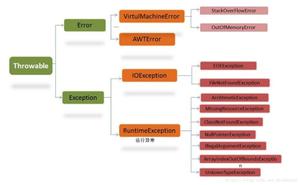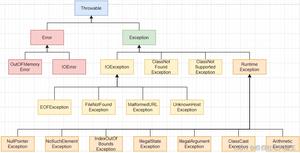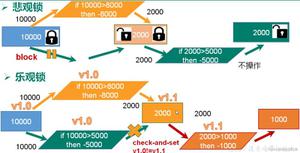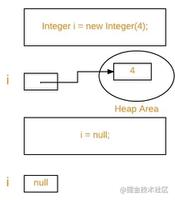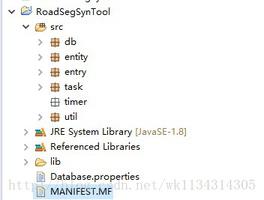浅析Java中的异常处理机制
异常处理机制
1、抛出异常
2、捕获异常
3、异常处理五个关键字:
try、catch、finally、throw、throws
注意:假设要捕获多个异常:需要按照层级关系(异常体系结构) 从小到大!
package exception;
/**
* Java 捕获和抛出异常:
* 异常处理机制
* 1、抛出异常
* 2、捕获异常
* 3、异常处理五个关键字
* try、catch、finally、throw、throws
* 注意:假设要捕获多个异常:需要按照层级关系(异常体系结构) 从小到大!
*/
public class Test {
public static void main(String[] args) {
int a = 1;
int b = 0;
/**
* try catch 是一个完整的机构体,finally 可以不要
* 假设IO流,或者跟资源相关的东西,最后需要关闭,关闭的操作就放在 finally 中
*/
try { //try 监控区域
System.out.println(a / b);
} catch (ArithmeticException exception){ //catch(想要捕获的异常类型) 捕获异常
System.out.println("程序出现异常,变量b不能为0");
} finally { //处理善后工作
System.out.println("finally");
}
System.out.println("-------------- 分隔符 --------------");
try {
new Test().a(); //无限循环
} catch (Error error){
System.out.println("Error");
} catch (Exception exception){
System.out.println("Exception");
} catch (Throwable throwable){
System.out.println("Throwable");
} finally {
System.out.println("finally");
}
}
public void a(){
b();
}
public void b() {
a();
}
}
捕获异常
快捷键:选中代码 Ctrl + Alt + T
捕获异常的好处:程序不会意外的停止,try catch 捕获异常后程序会正常的往下执行
package exception;
/**
* 捕获异常快捷键
* 选中代码后:Ctrl + Alt + T
* 如:
* 选中 System.out.println(a / b);
* 然后快捷键 Ctrl + Alt + T
*/
public class Test2 {
public static void main(String[] args) {
int a = 1;
int b = 0;
try {
System.out.println(a / b);
} catch (Exception exception) {
exception.printStackTrace(); //打印错误的栈信息
} finally {
}
}
}
抛出异常
1、在方法中抛出异常:throw
2、在方法上抛出异常:throws
package exception;
/**
* 捕获异常
* 抛出异常
*/
public class Test3 {
public static void main(String[] args) {
/**
* 方法中抛出异常
*/
new Test3().test(1,0); //匿名内部类直接调用
System.out.println("------------ 分隔符 -------------");
/**
* 方法上抛出异常
* 捕获异常的好处:
* 程序不会意外的停止,try catch 捕获异常后程序会正常的往下执行
*/
try {
new Test3().test2(1,0); //匿名内部类直接调用
} catch (ArithmeticException e) {
e.printStackTrace();
}
}
/**
* 在方法中抛出异常:throw
* @param a
* @param b
*/
public void test(int a, int b){
if (b == 0){ //throw
throw new ArithmeticException(); //主动抛出异常,一般在方法中使用
}
System.out.println(a / b);
}
/**
* 假设在方法中处理不了这个异常,就在方法上抛出异常,然后捕获异常
* 在方法上抛出异常:throws
* @param a
* @param b
* @throws ArithmeticException
*/
public void test2(int a, int b) throws ArithmeticException{
if (b == 0){
throw new ArithmeticException();
}
}
}
以上是 浅析Java中的异常处理机制 的全部内容, 来源链接: utcz.com/z/317668.html

